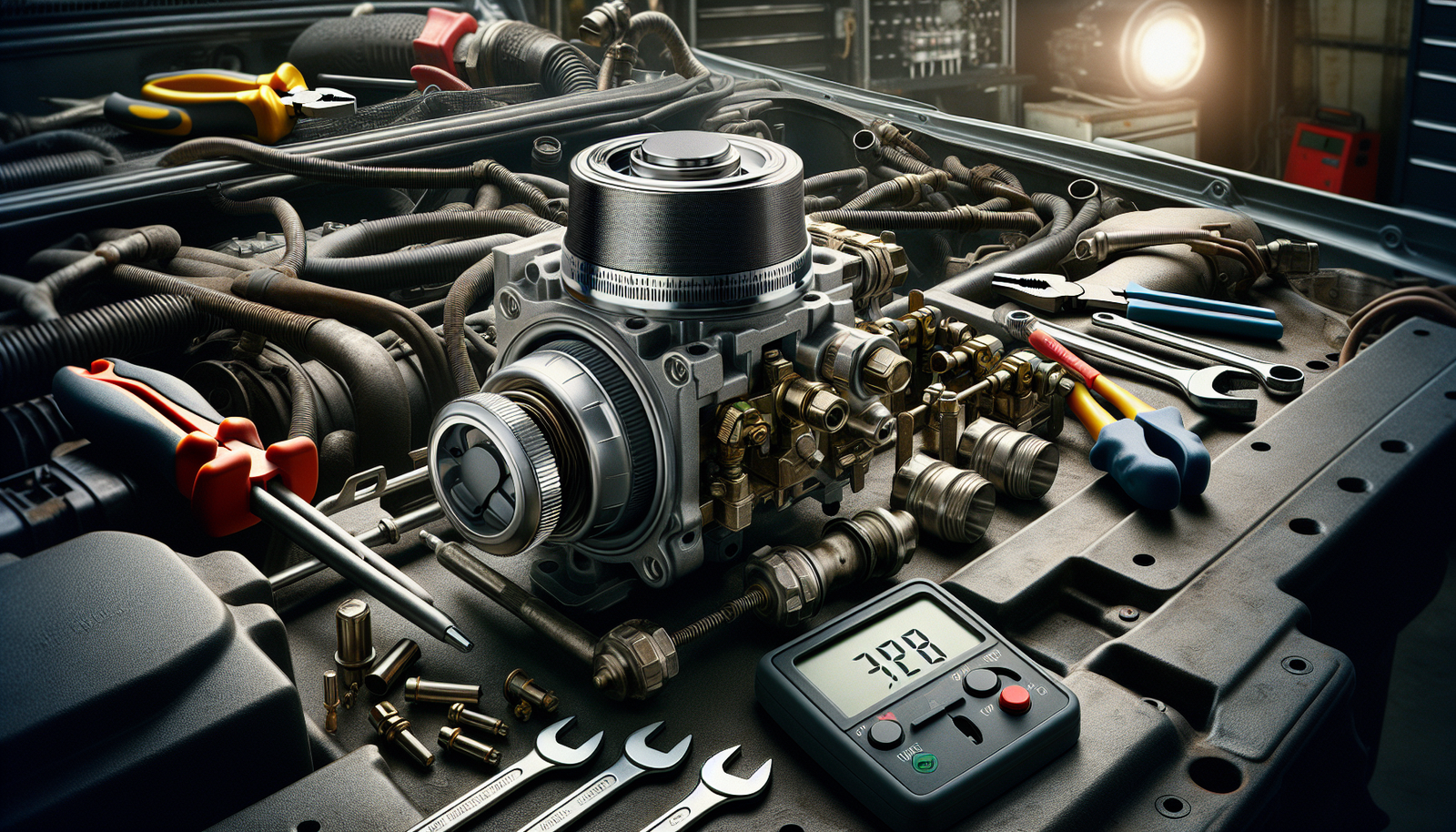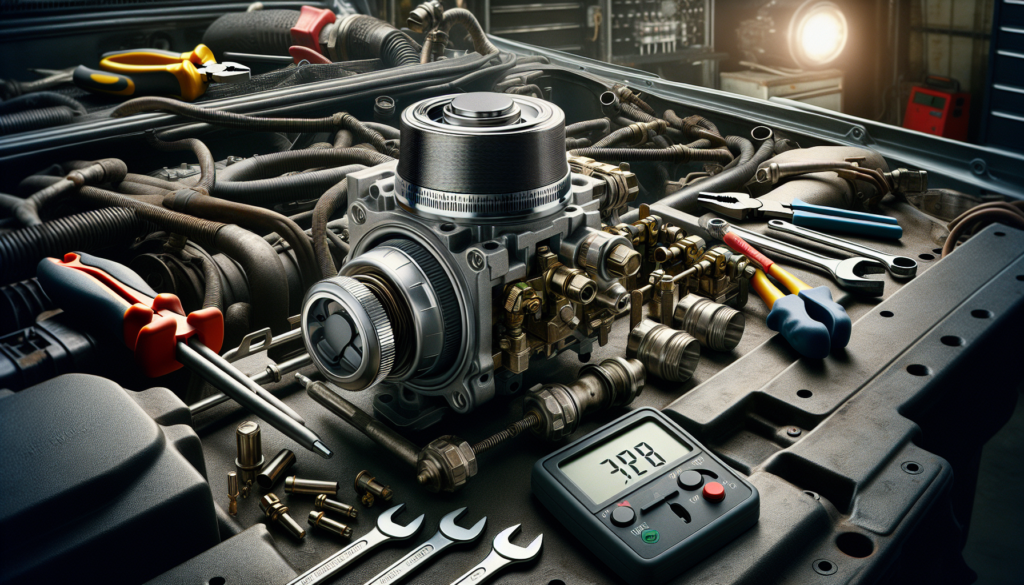
Setting off on a chilly morning only to find that your Cascadia isn’t warming up can lead to quite the cold and uncomfortable situation. Your truck’s ability to regulate its interior temperature hinges largely on a properly functioning thermostat. If you suspect that yours might be facing some heating issues, it’s crucial to assess its condition. From quick visual inspections to more in-depth evaluations, identifying hiccups in your thermostat operation can be simpler than you think. “How Do I Check My Cascadia’s Thermostat for Heating Issues?” offers a step-by-step approach, ensuring you can handle those nippy days on the road with ease.
Understanding Your Cascadia’s Thermostat
Role of the Thermostat in Vehicle Heating
Your Cascadia’s thermostat is a critical component in regulating your vehicle’s temperature. It acts as a gatekeeper for coolant flowing to the radiator. When your engine is cold, the thermostat remains closed, allowing the engine to warm up quickly. Once the engine reaches its optimal operating temperature, the thermostat opens to let coolant flow through the radiator, preventing the engine from overheating. Ensuring this delicate balance is crucial for maintaining both the health of your engine and the comfort of your cabin.
Signs of a Faulty Thermostat
Signs that your Cascadia’s thermostat might be failing include an engine that runs either too hot or too cold, an overheating engine, or fluctuations in the temperature gauge. You may also notice that the cabin heating isn’t working as efficiently, or the heater blows cold air. These are indicators that your thermostat could be stuck closed or open, or may not be operating correctly.
Types of Thermostats in Cascadia Trucks
Cascadia trucks typically use wax-pellet type thermostats. These thermostats contain a small pellet of wax inside a sealed chamber that expands and contracts with the temperature changes, causing the thermostat to open or close. The design and materials might differ slightly based on the model of your Cascadia truck, but their basic function remains the same.
Tools and Materials Needed for Testing
Basic Toolkit Requirements
To test your thermostat, you’ll need a basic toolkit that includes screwdrivers, pliers, a wrench set, and potentially a socket set depending on your Cascadia model. These tools will help you remove the thermostat housing and provide access to the thermostat itself.
Safety Equipment
Safety should always be your top priority. Make sure to have gloves and safety glasses on hand to protect yourself from potential spills, hot surfaces, or any flying debris while working on the vehicle.
Additional Materials for Comprehensive Testing
For a more comprehensive test, you’ll want to have a thermometer to check the coolant temperature, new coolant to replace any that is lost during testing, and a container to catch any fluid that drains out. Additionally, having a gasket or sealant for the thermostat housing is a good idea, in case you need to replace it.

Preparing Your Cascadia for Thermostat Inspection
Ensuring a Cool Engine
Always make sure your engine is completely cool before you start working on the thermostat. Opening the cooling system on a hot engine can lead to severe burns and spills from pressurized coolant.
Vehicle Positioning
Park your Cascadia on a level surface and set the parking brake. This will give you a stable work environment and will help prevent the vehicle from moving while you are working on it.
Accessing the Thermostat Housing
Locate the thermostat housing at the engine end of the upper radiator hose. You’ll likely need to remove certain components or engine covers to gain access. Take your time and be careful not to damage any parts during removal.
Visual Inspection of the Thermostat
Identifying Corrosion and Debris
Check for signs of corrosion on the thermostat housing and the thermostat itself. Rust or buildup can affect performance and may indicate a coolant leak or an aging cooling system.
Checking for Physical Damage
Inspect the thermostat for any cracks or breaks. Physical damage can prevent it from opening or closing properly, leading to engine overheating or insufficient warming up.
Assessing Thermostat Gasket Condition
Inspect the gasket that seals the thermostat housing. Over time, these can become brittle and fail, leading to leaks and loss of coolant. If the gasket shows signs of wear, it will need to be replaced.

Assessing Thermostat Operation
Evaluating the Opening and Closing Mechanism
To evaluate the opening and closing mechanism, you can observe the thermostat as the engine warms up. A working thermostat should open as the engine reaches its operating temperature, allowing coolant to flow to the radiator.
Monitoring the Temperature Response
Monitor the temperature gauge on your dashboard. A properly functioning thermostat will maintain a consistent engine temperature within the manufacturer’s specified range.
Thermostat Testing in a Water Bath
For a definitive test, remove the thermostat and place it in a water bath with a thermometer. Heat the water and observe at what temperature the thermostat begins to open. Compare this to the manufacturer’s specifications to determine if the thermostat is functioning correctly.
Testing the Heating System Performance
Monitoring Cabin Temperature
Turn on your cabin heat and monitor the temperature. A properly working thermostat and heating system should produce a consistent, warm airflow not long after the vehicle’s engine reaches its optimal operating temperature.
Checking for Consistent Heating
The heating should be consistent without wild fluctuations. If the air temperature varies or blasts cold air intermittently while the engine is at operating temperature, this may signal a thermostat issue.
Inspecting Radiator Hose Temperature
Feel the temperature of the radiator hose after the engine has warmed up. It should be hot to the touch, indicating the coolant is circulating through an open thermostat. Be cautious to prevent burns.

Using Diagnostic Equipment
Employing a Diagnostic Code Reader
Connect a code reader to your Cascadia’s on-board diagnostic port. This device can help you retrieve any trouble codes that might signal a thermostat or cooling system issue.
Interpreting Trouble Codes
Interpreting the codes can give you information on whether the thermostat is contributing to any engine codes. Look for codes related to engine temperature regulation or coolant system performance.
Benefits of a Professional Diagnostic Check
If you’re not confident in interpreting the codes or performing the tests yourself, consider a professional diagnostic check. A certified technician will have the knowledge and equipment to provide a more detailed analysis.
Common Thermostat Issues in Cascadia Trucks
Sticking in the Open or Closed Position
Thermostats in Cascadia trucks can sometimes stick in the open or closed position. This can result in the engine not reaching proper operating temperature or overheating, respectively.
Thermostat Response Time Delays
As thermostats age, their response time can slow, leading to slower engine warm-up times and reduced fuel efficiency.
Impacts of Environmental Factors
Environmental factors like extreme temperatures and contaminants can also impact your thermostat’s performance, sometimes making it react more slowly or erratically.

Replacing the Thermostat
When to Consider Replacing Your Thermostat
Consider replacing your thermostat if you’re experiencing temperature inconsistencies, overheating, or poor cabin heat. It’s also wise to replace it as part of regular maintenance after a certain number of miles.
Step-by-Step Guide to Thermostat Replacement
To replace the thermostat, drain the coolant, remove the thermostat housing, and then the thermostat. Place a new thermostat and gasket in the housing and reassemble. Be sure to follow the manufacturer’s specifications for tightening and torque.
Reassembly and Post-Replacement Checks
After reassembly, refill the coolant and bleed the system of air. Check for leaks and monitor the engine temperature to ensure the new thermostat is functioning properly.
Upgrading Your Cascadia’s Thermostat
Advantages of Upgraded Thermostats
Upgrading your thermostat can improve engine efficiency, reduce warm-up times, and maintain more consistent engine temperatures.
Compatibility and Selection
Ensure the upgraded thermostat is compatible with your Cascadia model. Check for design, temperature range, and housing compatibility.
Installation Tips for Enhanced Performance
Installation is similar to replacing a standard thermostat. However, follow any additional instructions that come with the upgraded thermostat to maximize its performance benefits. Remember to handle the thermostat with care and install it in the correct orientation.
By keeping a close eye on your Cascadia’s thermostat and understanding how to troubleshoot and maintain it, you can ensure the longevity and efficiency of your truck’s heating system. Whether you choose to stick with the standard thermostat or upgrade to a high-performance one, your comfort and your vehicle’s health depend on this small but mighty component.
